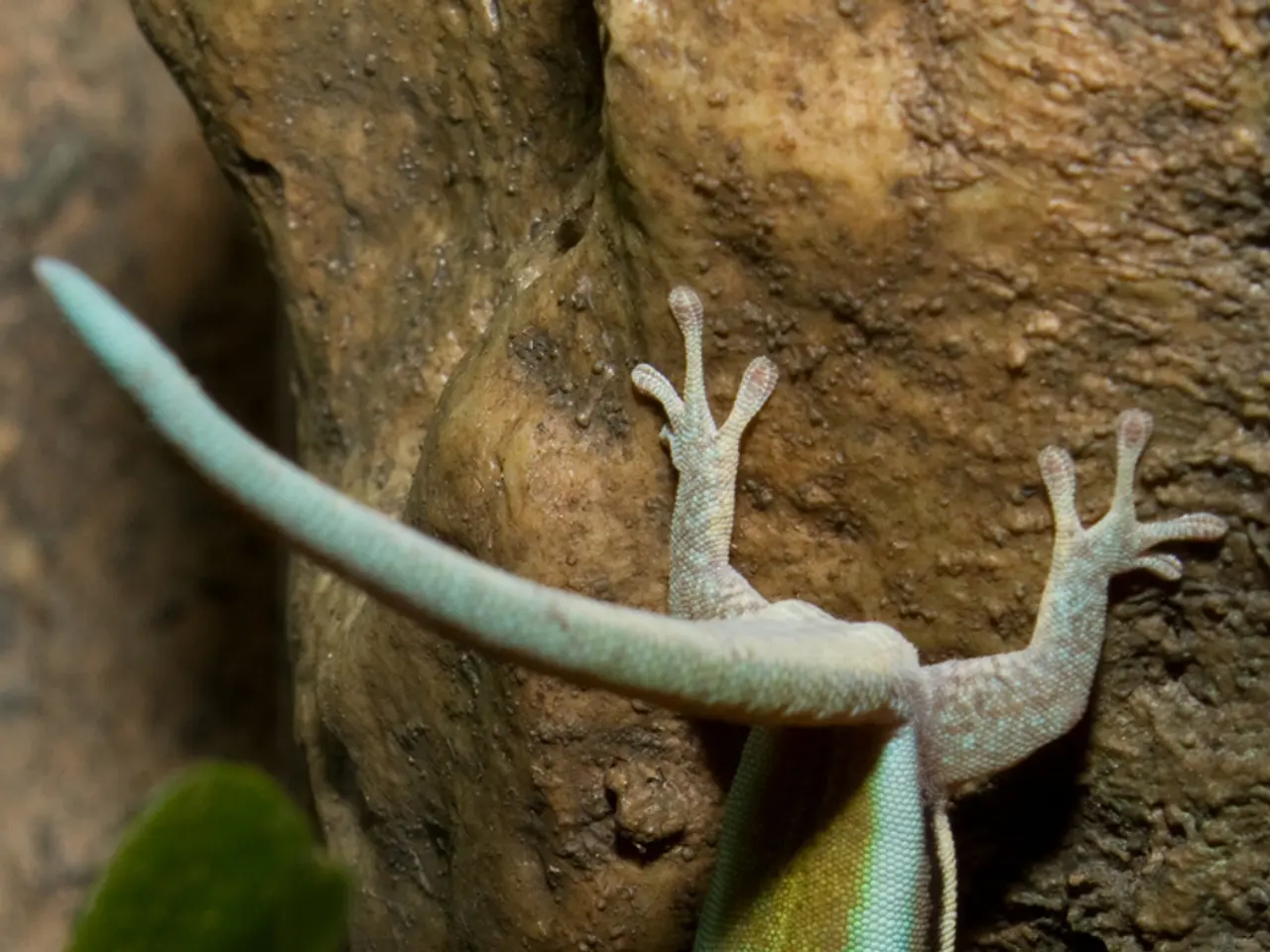Hidden Away for Years: Living Creatures Discovered Huddled Within Stone Formations
In the realm of natural phenomena, few stories capture the imagination quite like that of animals found living in seemingly impossible locations. From the depths of rocks to the heart of time capsules, these tales of survival have baffled and intrigued us for centuries.
Let's delve into the scientific explanations behind these extraordinary occurrences, focusing on lizards and amphibians. These creatures have evolved a variety of adaptations that allow them to thrive in diverse environments, from deserts to forests.
Their lower metabolic rates compared to mammals and birds enable them to regulate their activity levels, a trait that proves invaluable in harsh conditions. Amphibians, for instance, possess a circulatory system that partially mixes oxygenated and deoxygenated blood, a remnant of their more primitive lung and circulatory evolution [1]. This unique physiology influences their behaviour and habitat requirements.
These animals also exhibit remarkable dispersal capabilities. Whether through natural means like rafting on vegetation or debris across water bodies, or through human-mediated transport, they can colonize new areas, sometimes appearing in locations that seem isolated or unexpected [2].
Their morphology further supports their survival in different environments. For example, reptilian skull and jaw structure adaptations allow efficient feeding strategies suited to available prey and habitats [3]. These evolutionary traits enable them to thrive in a wide range of ecological niches, including isolated or harsh locations.
One such example is Ol' Rip, a Texas horned lizard originally named Blinky, who was captured in Eastland County, Texas, by a 4-year-old named Will Wood in 1924. Ol' Rip's unique survival story reached unprecedented heights when it was discovered that the lizard had been placed inside a time capsule in 1897 and retrieved 31 years later [4].
However, the authenticity of Ol' Rip's story has been met with skepticism, much like the tale of Benjamin Franklin's study of alive toads found in an encased limestone boulder in Paris, France, in 1782 [5]. Despite these doubts, these stories serve as a testament to the incredible adaptability of these creatures.
Moreover, the unique survival abilities of these animals, such as estivation, may hold clues for prolonging human survival or withstanding severe climate change. Estivation is a process whereby an animal slows their metabolic rate down to near death to survive periods of extreme heat and drought [6].
The Texas horned frog, for instance, can enter estivation during frigid conditions for a period of around 6 months by hiding in moist, loose soil [7]. Similarly, the wood frog's ability to survive in freezing temperatures is unique among amphibians [8].
In contrast to these extraordinary survival stories, many reports of animals being encased in rocks could be misinterpretations or exaggerations. There is no existing physical evidence to suggest that all the reports were true [9].
In conclusion, the phenomenon of lizards and amphibians living in seemingly improbable places results from their physiological adaptability, natural and human-facilitated dispersal, and evolutionary traits that allow them to exploit diverse habitats [1][2][3]. These creatures continue to captivate us with their resilience and ability to adapt, offering valuable insights into survival strategies that could potentially benefit humans in the face of climate change.
References: [1] - The Physiology of Amphibians. (n.d.). Retrieved April 20, 2023, from https://www.britannica.com/animal/amphibian/Physiology [2] - European tree frog. (n.d.). Retrieved April 20, 2023, from https://www.britannica.com/animal/tree-frog/European-tree-frog [3] - Evolution of the skull and jaw in reptiles. (n.d.). Retrieved April 20, 2023, from https://www.ncbi.nlm.nih.gov/books/NBK92757/ [4] - Ol' Rip, the World's Longest-Lived Texas Horned Lizard. (n.d.). Retrieved April 20, 2023, from https://www.texasmonthly.com/the-culture/ol-rip-the-worlds-longest-lived-texas-horned-lizard/ [5] - Benjamin Franklin's toads. (n.d.). Retrieved April 20, 2023, from https://www.smithsonianmag.com/science-nature/benjamin-franklins-toads-180952015/ [6] - Estivation. (n.d.). Retrieved April 20, 2023, from https://www.britannica.com/animal/estivation [7] - Texas Horned Lizard. (n.d.). Retrieved April 20, 2023, from https://www.nps.gov/subjects/herps/texas-horned-lizard.htm [8] - Wood Frog. (n.d.). Retrieved April 20, 2023, from https://www.nature.org/en-us/get-involved/how-to-help/animals-in-crisis/frogs-and-toads/wood-frog/ [9] - Animals trapped in rocks: fact or fiction? (n.d.). Retrieved April 20, 2023, from https://www.snopes.com/fact-check/animals-trapped-in-rocks/
- The news of lizards and amphibians found living in seemingly impossible locations is a testament to the fascinating world of biology, particularly microbiology and evolution.
- Climate change has led to an increased interest in the scientific explanations behind these extraordinary occurrences and the survival strategies of these animals.
- Science communication plays a crucial role in sharing these stories and the valuable insights they offer regarding adaptation, survival, and potentially human resilience.
- Insects, too, have a role in this narrative, as their small size and adaptable physiology allow them to thrive in diverse environments.
- Health-and-wellness and fitness-and-exercise enthusiasts can learn from the prolonged hibernation techniques of some amphibians to better understand human endurance under extreme conditions.
- Lifestyle magazines and home-and-garden journals might find inspiration in sustainable-living practices advocated by studying the eco-friendly habits of these creatures.
- The data-and-cloud-computing industry could benefit from the innovative solutions that emerge from understanding the physiology and behavior of these animals, such as estivation and heat regulation.
- Environmental-science students can learn about the impact of climate change on animal populations by studying the effects on amphibians and reptiles, while education-and-self-development resources can explore human parallels in personal growth and learning.
- Technology advancements could help address misunderstandings and skepticism surrounding these survival stories by providing accurate information and investigative methods.
- As we continue to uncover more about these animals and their adaptive abilities, it's essential to remember the importance of preserving our planet's ecosystems and promoting conservation efforts, in light of the ongoing challenges posed by climate change.




